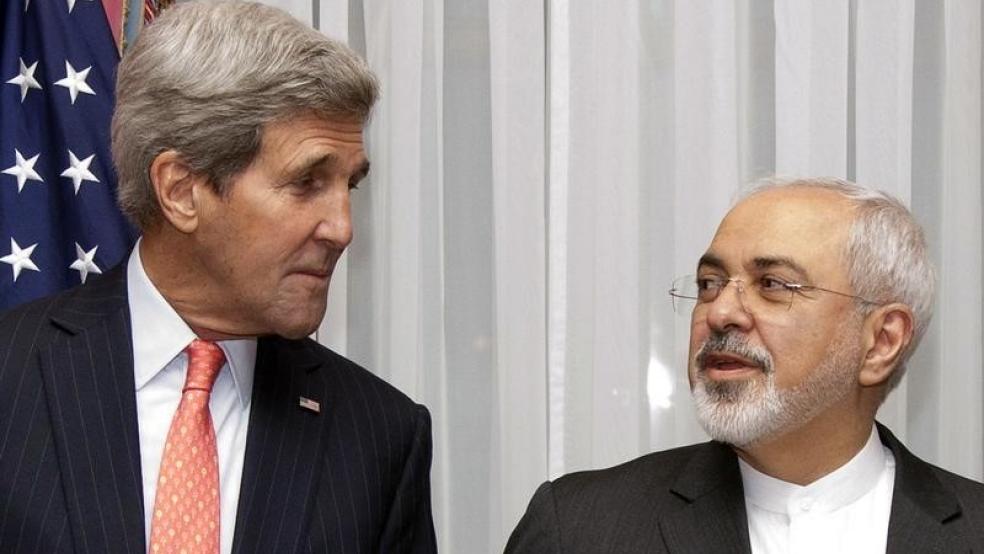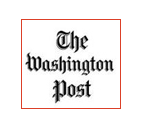VIENNA — An historic agreement Tuesday to limit Iran’s nuclear program in exchange for sanctions relief will ensure Iran has no possibility to achieve rapid nuclear weapons “breakout” capabilities for at least the next decade, diplomats said.
Obama administration officials described the deal as moving beyond a political framework reached three months ago, and said it met all U.S. requirements for blocking pathways to weapons development with strict inspections and provisions to snap sanctions back into place if Iran violates the rules.
The agreement will not take effect Iran is certified to have met its terms — something Iran says will be a matter of weeks — but Western diplomats have said could take at least until the end of the year. The deal culminated 17 straight days of sometimes-rocky negotiations that often stretched through the night and occasionally were marked by shouting that wafted beyond the closed doors of the negotiating rooms.
“This is a great day for world peace,” said a senior Iranian official, speaking to Western reporters on condition of anonymity in advance of the official announcement. “We hope we will be able to make a big step toward regional and international peace and security.”
The official said the agreement would be submitted to the U.N. Security Council within a week to 10 days, and then be incorporated into a new Council resolution that eventually will lift sanctions that have crippled Iran’s economy.
[The White House effort now shifts to Congress]
Beaming diplomats gathered at mid-morning in the Austria Center in downtown Vienna, where the official announcement was scheduled later Tuesday.
Standing with the foreign ministers for a group photo were two nuclear physicists who together worked out many of the most difficult nuclear problems standing in the way of deal. Energy Secretary Ernest Moniz stood beside Kerry, while Ali Akbar Salehi was to the side of Iran’s foreign minister, Mohammad Javard Zarif.
Zarif described negotiations as a “win-win solution.”
“What we could accomplish is an important achievement for all of us,” he said. “Now we are starting a new chapter of hope.”
In Tehran, Iranian President Hassan Rouhani posted a message on Twitter saying the deal shows that “constructive engagement works. With this unnecessary crisis resolved, new horizons emerge wit focus on shared challenges.”
A senior Obama administration official said that, until Iranian compliance is verified, an 18-month old interim agreement restricting Iran’s activities, and sanctions, will remain in place.
The overall scope seeks to put Iran at least one year away from nuclear weapons “breakout” levels — the time it takes to produce enough nuclear fuel for one bomb — if it decided to shun the accord and strike out on its own.
Iran insists does not want an atomic arsenal and wants the capability to produce nuclear fuel to power reactors for energy and medical applications.
President Obama was informed of the deal in a telephone call from Secretary of State John F. Kerry. Obama was scheduled to make a public statement from the White House at 7 a.m. EDT.
Achievement of an agreement ends one phase of more than 18 months of negotiations between Iran and world powers, including the United States, Britain, France, Germany, Russia, China and the European Union.
But it begins another, potentially more critical phase, as the administration tries to sell the deal to a skeptical Congress. Lawmakers have 60 days to review the agreement, totaling nearly 100 pages with a principal document and five technical annexes.
During that period, Obama has agreed not to use his executive authority to waive statutory U.S. sanctions on Iran. Congress will decide whether it wants to vote, by simple majority, a resolution of disapproval, which would permanently eliminate the president’s ability to waive the sanctions. Obama has said he would veto such a law, setting up a congressional attempt to override with the votes of 2/3 of House and Senate members.
In Israel, the accord was viewed with widespread worry after intense international lobbying efforts against the talks.
Israeli Prime Minister Benjamin Netanyahu described the deal as a “mistake of historic proportions” that will replenish Iran’s treasuries and allow it to maintain the components of a potential nuclear weapon.
“Iran is going to receive a sure path to nuclear weapons. Many of the restrictions that were supposed to prevent it from getting there will be lifted,” Netanyahu said during a meeting with the Dutch foreign minister in Jerusalem.
[Take the quiz: What do you know about the Iran nuclear talks]
Most congressional criticism has come over several issues. They include: whether embargoes under U.N. sanctions would continue on the sale to Iran of conventional weapons and ballistic missile technology; whether international inspectors would be allowed “anytime, anyplace” access to all declared and suspected Iranian nuclear facilities — including military installations — and mechanisms to settle disputes over possible violations and to “snap-back” lifted sanctions if Iran cheated.
Based on leaks from the negotiations over the past several weeks, critics had charged that the United States had compromised on all those issues, and insisted that the votes would be there to override any veto. The final deal, as described by official in advance of release of the documents, appeared to provide ammunition for both sides in the upcoming political debate.
First out of the box on the reported deal, Sen. Ben Sasse (R-Neb.) released a statement saying that “sadly, the administration just lit the fuse for a nuclear arms race in the Middle East.”
“We all know Iran’s neighbors will not sit idly as the world’s largest state-sponsor of terror becomes a nuclear-threshold state,” he said.
Sasse repeated earlier statements by other lawmakers saying that an administration decision to allow Iran to maintain some elements of a nuclear program — which Tehran maintains is only for peaceful power use — has been a major step back from its initial goal of completely dismantling Iran’s nuclear program.
Negotiators have long said that was an unrealistic expectation, and that world demands, short of military action, would not force Iran into submission. Instead, Obama and others have said that the agreement closes all four “pathways” to an Iranian nuclear weapons.
On the issue of embargoed arms sales, negotiators split the difference between lifting current U.N. prohibitions against them, and keeping them indefinitely in place.
Instead, a new U.N. resolution will incorporate all existing sanctions resolutions and lift them once the International Atomic Energy Agency certifies it has met its commitments under the deal.
Separately, negotiators agreed to an ongoing eight-year missile ban, and continuing prohibitions on most conventional weapons sales for five years — though either could theoretically be lifted earlier if the IAEA completes all its investigations more quickly than usual.
Under the agreement, Iran will commit to the Additional Protocol of the international Nuclear Non-Proliferation Treaty, which allows IAEA inspectors to demand access to any site in the country, including military facilities.
Once it submits a request to Iran to visit an “undeclared” facility, the IAEA and Iran will have 14 days to agree, either to IAEA access to the site or satisfaction of inspector concerns by some other means.
If IAEA concerns are not met within 14 days, a joint commission made up of the seven negotiating countries — Iran and the U.S. and its partners — plus the European Union, will review the dispute for up to seven days and decide what Iran needs to do to satisfy IAEA concerns.
Only five of the eight members need to agree, effectively eliminating the possibility that Iran, Russia and China cannot prevail if they vote together.
Iran then has three days to do so. If it does not, “then we can begin snap-back” of sanctions, an administration official said. “In our judgment,” the official said, the total of 24 days from inspection request to snap-back “is not enough time to cover up” a violation.
The joint commission procedures, administration officials said, close a “covert” route to an Iranian nuclear weapon, one of the four “pathways” to developing a bomb.
The other three pathways, through currently declared nuclear sites, are closed by measures first outlined in the political framework reached by negotiators in April in Lausanne, Switzerland.
The deal would reduce Iran’s current number of centrifuges — which enrich uranium — from about 19,000 to about 6,000, and limit the level of enrichment to 3.67 percent, far below weapons grade, for at least 15 years.
At Natanz, Iran’s primary enrichment facility, where there are approximately 16,000 first-generation centrifuges, about 5,000 will remain operational.
In the underground facility at Fordow, about one-third of the current 3,000 centrifuges will remain, none of them to be used for uranium enrichment for at least 15 years. Russia is to help Iran convert the remaining Fordow centrifuges to isotope production.
Iran’s current stockpile of low-enriched uranium will be reduced from about 12,000 kilograms to 300. The remainder, administration officials said, would likely be sold to Russia.
Iran must also, with international assistance, remove the core of its heavy-water reactor at Arak, capable of producing plutonium. “With international partnership, it will be redesigned and rebuilt,” a senior administration official said, and converted into a reactor “to produce zero weapons grade plutonium in normal use.”
DeYoung reported from Washington. Brian Murphy in Washington contributed to this report.
This article was published originally in The Washington Post.
Read more at The Washington Post:





